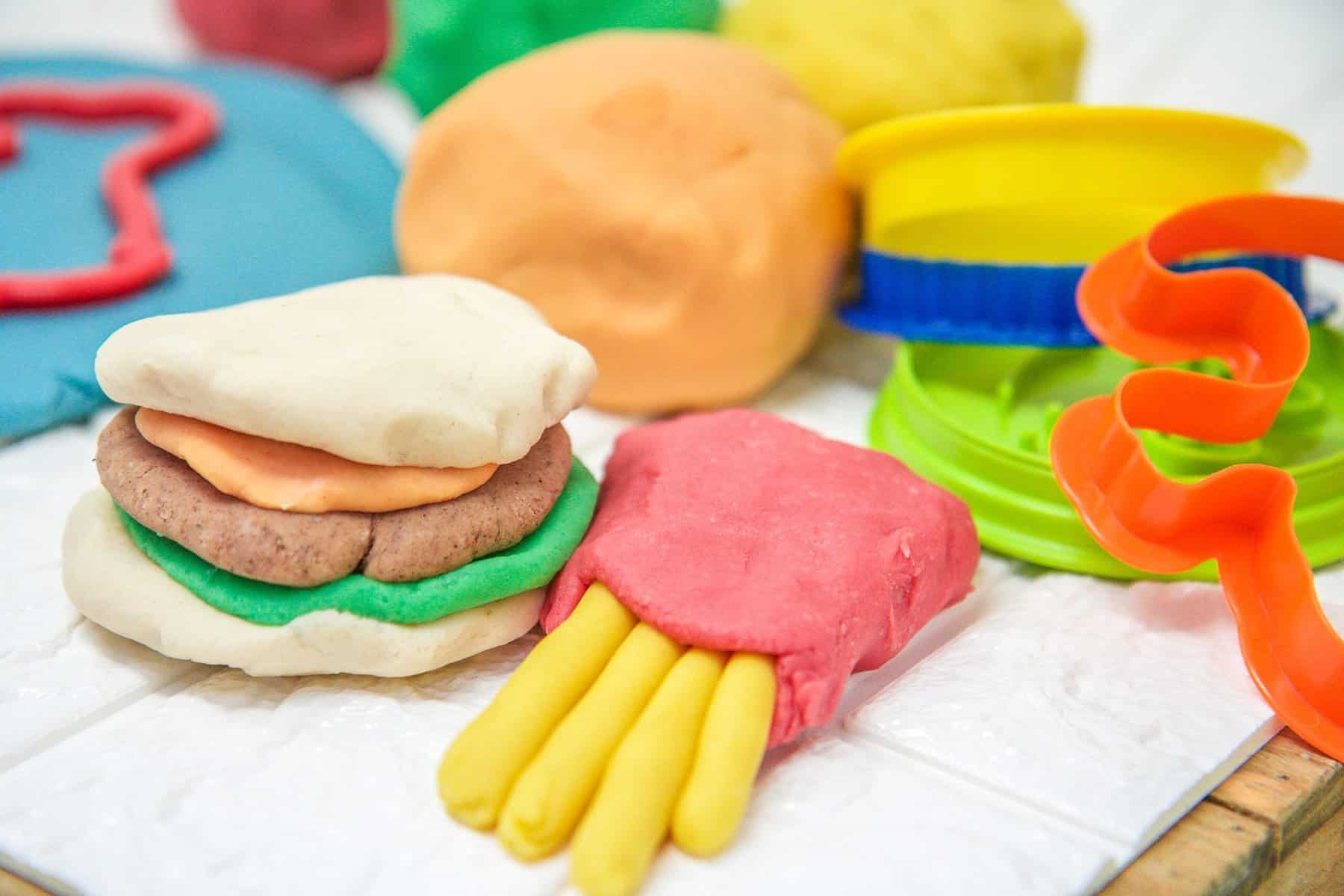Unleashing Creativity: Making Marvelous Things with Playdough
Hello, wonderful parents and guardians! Are you ready to dive into a world of color, creativity, and endless fun? Well, grab your little one’s hand, because we’re about to embark on an exciting journey into the squishy and moldable universe of playdough!
Playdough isn’t just a toy; it’s a tool for learning, growth, and expression. When your children play with playdough, they’re not just creating art; they’re developing crucial skills and letting their imaginations soar. In this comprehensive guide, we’ll explore the fantastic things you can make with playdough and how each activity can benefit your child’s development.
Why Playdough is More Than Just Fun
Before we get our hands doughy, let’s understand why playdough is such a pivotal part of childhood development:
- Sensory Play: Playdough offers a sensory experience that stimulates a child’s senses. It can be squished, rolled, flattened, and more, which makes it a tactile dream for curious minds!
- Motor Skill Development: As children manipulate the dough, they’re also strengthening their hand muscles and improving their fine motor skills, preparing them for tasks like writing and cutting.
- Creativity and Imagination: There are no limits to what can be made with playdough. This freeform play encourages children to imagine and create, enhancing their creative thought processes.
- Cognitive and Academic Skills: Playdough can be a playful way to teach shapes, colors, and even math concepts like counting and measuring in a hands-on, engaging way.
- Social and Emotional Skills: When kids play together with playdough, it fosters collaboration and communication while also providing a soothing and calming activity to reduce stress and anxiety.
Setting the Stage for Playdough Fun
Now that we know the benefits, let’s prepare for an unforgettable playdough session with these simple steps:
- Choose the Right Playdough: You can either buy playdough from the store or make your own at home. If opting for the latter, use safe, non-toxic ingredients, because we know little ones love to explore with their mouths too!
- Playdough Tools: Gather a collection of tools that can be used to mold and shape the playdough. Cookie cutters, rolling pins, plastic knives, and stamps are great beginner’s tools that you might already have around the house.
- Protect Your Surfaces: Playdough is generally non-toxic and non-staining, but to keep things tidy, use a plastic mat or a wipeable tablecloth.
- Set Ground Rules: Before the fun begins, set a few simple rules, like keeping the playdough away from the carpet and not mixing all the colors unless that’s part of today’s creativity plan!
Playdough Activities to Spark Imagination
It’s showtime! Roll up those sleeves and let’s make some magic:
1. Playdough Characters and Creatures
Create a whole new world by making characters and creatures out of playdough. Encourage your child to make their favorite animals, or invent totally new ones! This is a fantastic way for children to express themselves and tell stories through their creations.
Give them a theme, like ‘Under the Sea’ or ‘In the Jungle,’ and watch as they sculpt their interpretations of these environments. Not only will they have a blast, but they’ll also be learning about different ecosystems and animals in the process!
2. Miniature World Building
With playdough, you can create miniature worlds; from bustling cities with skyscrapers to serene farms with animals. This activity can take imagination to the next level and even integrate learning elements, such as understanding the roles of community helpers when building a town.
As you build together, ask open-ended questions like, “What happens in our playdough city?” or “Who takes care of the animals on our farm?” This promotes storytelling and vocabulary development.
There’s so much more to playdough than meets the eye. In the next part of our guide, we’ll delve into some advanced playdough techniques, more intricate projects, and the educational opportunities each can present. But for now, just remember that by squishing and shaping playdough, you’re not only having fun, but you’re also helping your child mold their future—one cute little dough figurine at a time.

5 Essential Tips for Parents Preparing for Playdough Fun
Ready to shape up some fun? Here are five key things to know before you and your child start playing with playdough:
1. Understanding Playdough Safety
Ensuring the safety of your playdough is paramount. Whether you use store-bought or homemade, checking for non-toxic, child-safe labels is essential. For homemade playdough, use food-grade ingredients to keep it safe in case it ends up in tiny mouths. Keep a close eye on play sessions to prevent any accidental ingestion or other safety hazards.
2. Embracing the Mess
One of the joys of playdough is also one of the challenges—it can get messy! Dress your child in clothes that are easy to clean, and stay relaxed about the chaos. After all, it’s through this mess that your little one is exploring and learning. A quick cleanup area with damp cloths on standby can also help manage any spills or smudges on tiny hands or surfaces.
3. Encouraging Exploration
Resist the urge to direct your child’s playdough activities too much. Instead, encourage exploration by asking questions and making suggestions that spur imagination. If they’re flattening and shaping, ask what they might be creating, or suggest they might want to make a pattern. This kind of interaction can lead to some truly inventive play!
4. Integrating Learning
Infuse learning into playdough time without making it feel like a lesson. If your child is making shapes, talk about the names and characteristics of those shapes. If they’re counting cookie-cutter pieces, it’s a subtle way to practice math. It’s amazing how much they can learn when they don’t even realize they’re doing it!
5. Playing Together
Collaboration can turn playdough time into a bonding activity. Sit down with your child and create alongside them. This doesn’t just show them that you value their interests and encourage their creativity—it also gives you a channel to teach them about sharing, taking turns, and collaborative creation.
With these tips in mind, you and your little artist are all set to create with confidence. Remember to savor these moments of hands-on creativity—they’re precious and fleeting. And who knows? You might just find that you enjoy the wonders of playdough just as much as they do!
Further Creativity with Playdough: Advanced Tips and Tricks
Once your child is comfortable with the basics, explore more complex playdough ideas. Try mixing in some glitter for extra sparkle, or use natural ingredients like spices and essences to create scented playdough for a multisensory experience.
Preschoolers can begin to use playdough for more structured learning, like forming letters of the alphabet or numbers. Encourage older kids to experiment with stop-motion animation using their playdough creations—a fusion of art and technology that can provide hours of entertainment and learning opportunities.
Regardless of how they play, remember to celebrate their creations and the joy of making marvelous things together. Each playdough session is an opportunity to develop important skills and make lasting memories. So, get out that dough and let the creativity flow!
And when the day is done and it’s time to pack away, storing playdough properly in an airtight container will keep it soft and ready for next time. Ready, set, create!
See more great Things to Do with Kids in New Zealand here. For more information see here
Disclaimer
The articles available via our website provide general information only and we strongly urge readers to exercise caution and conduct their own thorough research and fact-checking. The information presented should not be taken as absolute truth, and, to the maximum extent permitted by law, we will not be held liable for any inaccuracies or errors in the content. It is essential for individuals to independently verify and validate the information before making any decisions or taking any actions based on the articles.




